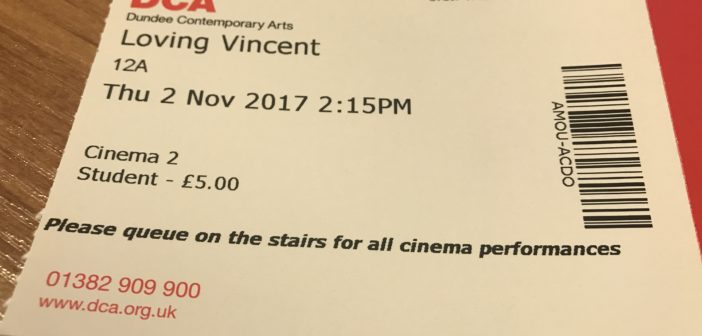Shocking red hair, broad — even dizzyingly so — strokes of color and a severed ear are images called to mind when one mentions the fated name of Impressionist pioneer Vincent Van Gogh. His story, in many ways, seems the epitome of artistic tragedy. Gaining little fame in his lifetime and plagued by mental illness and social exclusion for most of his life, the Dutch painter died spiritually and emotionally alone and, in his eyes, a failure.
It is easy with a tale such as this to want to clamp down upon and expand the drama that already associates itself with such a story, but rather than exploiting tragedy that was Van Gogh’s final years, the creators of “Loving Vincent,” the world’s first fully painted feature film, zoom in on the aftermath of the painter’s influence one year after his suicide.
Utilizing a cast of both seasoned performers and rising gems, such as Helen McCroy, Douglas Booth and Saoirse Ronan, the film was shot on backdrops constructed to mirror actual paintings by the artist, with a combination of painting and computer animation used to achieve the remarkable fluidity seen on film as each scene plays out brushstroke by brushstroke.
Set one year after the painter’s death, we begin with jaded Armand Roulin, son of Van Gogh’s postmaster who was the subject of several of the artist’s portraits. Roulin is tasked with delivering a letter to the late Van Gogh’s brother, Theo, whom he is unaware has also recently passed.
We follow Roulin’s journey to the town of Auvers, where Van Gogh spent his last few months, as he interacts with characters from Van Gogh’s time there. Each of the characters, brilliantly painted in the extraordinary style of Van Gogh, is made that much more striking as you realize their real-life situation in Van Gogh’s works.
Each actor, with the magic of costume and hairdressing, already bears intense resemblances with each of the real figures they portray. Yet the overwhelmingly meticulous efforts to paint each frame in the true Impressionist style of the artist render their portrayal shockingly realistic. Carefully positioned and posed shots even have the actors literally recreating the painter’s now most beloved works, as is the case with Ronan at the piano in a rendition of “Marguerite Gachet at the Piano.”
Roulin’s ‘quest’ leads him from character to character in a toned down ‘murder-mystery’ type exploit to gain further insight into the final days of the man he began his journey having all but indifference for.
While it is well-known that Van Gogh only sold one painting in his lifetime which, along with the disapproval of his father and financial dependence on his encouraging yet worried brother, mounted to feelings of dissatisfaction and incompleteness regarding his hoped for artistic career. However, what makes “Loving Vincent” a true love letter to the artist is the even greater and less obvious effort to reveal the influence Van Gogh had on those around him even in the midst of his perceived failure.
“Loving Vincent” reminds us of the humanity of the man, the wishes to connect and make others feel his sentiments, the efforts of the individual to interact with a world he truly desired to be a player in.
In creating a narrative centered on the aftermath of Van Gogh’s death, the film does more than reveal to us the tragedy of the man in the way a documentary might. Rather, we are privy to the ways in which the man — not the ambiguous artist figure, but the man — affected the human beings around him.
The title is an homage to the way that Van Gogh would sign his letters to his beloved brother, Theo. However, the parting remark seems even more appropriate here, where the act of loving a man who gave us his feelings so unguardedly will forever be an act presently practiced.
Note: This film was screened and seen by the writer at a cinema in the U.K. For more information and to find screenings of the world’s first fully oil-painted feature film in the U.S., go to http://lovingvincent.com/

